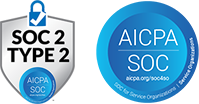What Is Americans With Disabilities Act?
The Americans With Disabilities Act (ADA) is a U.S. federal law enacted in 1990 that prohibits discrimination against individuals with disabilities. It requires employers, government agencies, and businesses to provide reasonable accommodations and ensure accessible facilities, communication, and services.
Why Americans With Disabilities Act Matters
The ADA protects civil rights by ensuring equal opportunity in employment and public life. Compliance fosters inclusive workplaces, expands talent pools, and reduces legal risk. By setting clear accessibility standards, organizations demonstrate social responsibility and enhance their reputation.
Where Americans With Disabilities Act Is Used
- Employment: Employers must offer reasonable accommodations—like adjusted schedules or assistive-technology devices—to qualified employees.
- Public Services: Government agencies must make programs, services, and facilities accessible.
- Transportation: Public transit and airline carriers must accommodate mobility devices and provide accessible boarding.
- Public Accommodations: Businesses—restaurants, hotels, retail stores, schools—must ensure physical and communication access.
- Telecommunications: Phone and internet service providers must offer relay services and captioning.
Americans With Disabilities Act Key Benefits
- Equal Opportunity: Removes barriers, allowing qualified individuals to work and participate fully.
- Expanded Talent Pool: Inclusive policies attract a broader range of candidates with diverse abilities.
- Enhanced Accessibility: Improves facility and technology design for everyone, not just those with disabilities.
- Legal Compliance: Reduces risk of discrimination claims and potential fines.
- Positive Reputation: Demonstrates commitment to diversity, equity, and inclusion.
Best Practices & Examples
- Conduct Accessibility Audits: Regularly assess facilities and digital platforms against ADA and WCAG standards.
- Implement Clear Accommodation Policies: Document procedures for requesting and granting accommodations.
- Train Managers & Staff: Provide workshops on ADA requirements and disability etiquette.
- Use Universal Design: Incorporate features—ramps, tactile signage, captioned videos—into new and existing environments.
- Monitor & Review: Track accommodation requests, resolution times, and feedback to refine processes.
Conclusion
The Americans With Disabilities Act is a cornerstone of civil rights that ensures individuals with disabilities can access employment, services, and public life. By embedding ADA compliance into policies, facilities, and training, organizations build inclusive environments that benefit all employees and customers.
Americans With Disabilities Act FAQs
Q: What is covered under the disability act?
The ADA covers employment, state and local government services, public accommodations (like hotels and restaurants), transportation systems, and telecommunications. Entities must remove barriers and provide reasonable accommodations.
Q: What are the four key goals of the Americans with Disabilities Act?
The ADA’s four goals are: (1) Equal opportunity in employment; (2) Accessibility of public services and transportation; (3) Access to public accommodations; (4) Effective communication through telecommunications relay and captioning services.
Q: What are ADA guidelines?
ADA guidelines set technical requirements for accessible design, including standards for ramps, door widths, signage, restroom fixtures, and digital content (via Web Content Accessibility Guidelines) to ensure usability by people with disabilities.
Q: What is the Persons with Disabilities Act 2019?
The Persons with Disabilities Act 2019 is an Indian law that replaced the 1995 Act to broaden the definition of disability, mandate inclusive education and employment rights, and require government and private entities to ensure barrier-free access.



